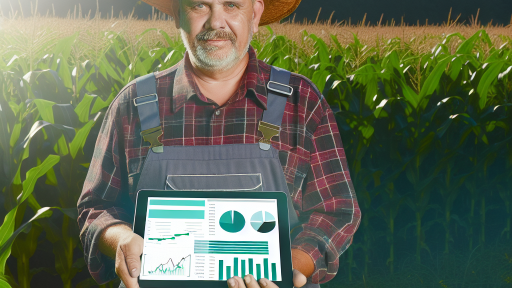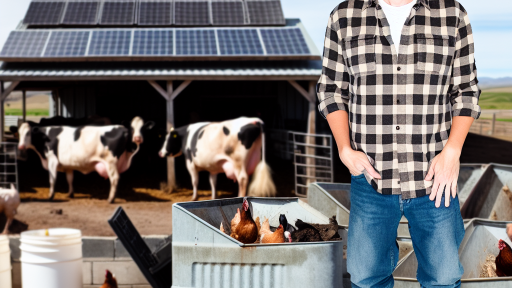Understanding the Importance of Risk Management in Agriculture
Defining Risk in Agriculture
Risk in agriculture encompasses various uncertainties.
These uncertainties can arise from weather conditions, market fluctuations, and pest infestations.
Understanding these risks is crucial for farmers aiming to sustain their operations.
The Impact of Risks on Farming
Risks can significantly affect crop yields and profitability.
In addition, they can threaten the entire farming operation.
Farmers who ignore risks may face financial instability.
Thus, identifying potential risks should be a priority for all agricultural professionals.
Benefits of Effective Risk Management
Implementing risk management strategies enhances decision-making.
It also minimizes the negative impacts of unexpected events.
Moreover, it fosters resilience in farming practices.
Consequently, farmers can improve their productivity and profitability.
Components of a Risk Management Plan
A comprehensive risk management plan includes various components.
These components typically consist of risk assessment, mitigation strategies, and monitoring.
First, farmers must assess potential risks related to their specific crops.
Next, they should develop strategies to mitigate these risks.
Transform Your Agribusiness
Unlock your farm's potential with expert advice tailored to your needs. Get actionable steps that drive real results.
Get StartedFinally, ongoing monitoring can help farmers adapt to changing conditions.
Building a Risk Management Culture
Creating a risk management culture is vital for success.
Farmers should engage the entire team in discussions about risks.
Training programs can enhance awareness and understanding of risk management.
Additionally, sharing experiences can foster collective problem-solving.
Utilizing Technology for Risk Management
Technology plays a crucial role in modern risk management.
Farmers can harness digital tools to predict weather patterns and market trends.
Data analytics can identify vulnerabilities in farming operations.
Finally, technology empowers farmers to make informed decisions swiftly.
Identifying Common Risks in Farming
Market Risks
Market risks arise from fluctuations in commodity prices.
These changes can impact profitability significantly.
Additionally, competition can affect market share.
Farmers must stay informed about market trends.
Using futures contracts can help mitigate price risks.
Production Risks
Production risks stem from factors that affect crop yields.
Pests and diseases can drastically reduce harvests.
Moreover, equipment failure can disrupt operations.
Adopting crop rotation and diversification helps manage these risks.
Implementing integrated pest management is also beneficial.
Financial Risks
Financial risks relate to changes in the economy.
Interest rate fluctuations can increase borrowing costs.
In addition, unexpected expenses can strain budgets.
Maintaining a solid financial reserve can offset some risks.
Farmers should also consider crop insurance options.
Showcase Your Farming Business
Publish your professional farming services profile on our blog for a one-time fee of $200 and reach a dedicated audience of farmers and agribusiness owners.
Publish Your ProfileEnvironmental Risks
Environmental risks include extreme weather events.
Flooding, droughts, and storms can devastate crops.
Climate change is exacerbating these risks globally.
Farmers can invest in resilient crop varieties.
Implementing water conservation practices can also help.
Evaluating the Impact of Climate Change on Farming Risks
Understanding Climate Change Effects
Climate change significantly alters weather patterns and agricultural productivity.
Farmers face unpredictable weather conditions that impact planting and harvesting times.
Increasing temperatures affect crop growth and yield, especially for heat-sensitive varieties.
Moreover, changes in precipitation can lead to droughts or flooding events.
Consequently, crops may suffer from water stress or disease proliferation due to excessive moisture.
Identifying Vulnerable Areas
Certain geographic regions are more susceptible to the impacts of climate change.
For instance, coastal areas often face increased storm surges and flooding risks.
Similarly, arid regions may experience harsher droughts, making water management critical.
Areas with diverse ecosystems can also see shifts in pest populations, affecting crop health.
Implementing Adaptive Strategies
Farmers can adopt various strategies to mitigate climate risks effectively.
For example, planting drought-resistant crop varieties enhances resilience against water shortages.
Additionally, improved soil management techniques promote better water retention.
Incorporating cover crops can reduce soil erosion and enhance soil fertility.
Technological tools, such as weather forecasting systems, allow for informed decision-making.
Building Strong Support Networks
Communication among farmers, agricultural experts, and policymakers is vital.
Collaborative efforts can lead to enhanced knowledge sharing and resource access.
Participating in local agricultural organizations fosters community support and resilience.
Furthermore, farmers can access funding and training programs through these networks.
These resources equip farmers to navigate the challenges posed by climate change.
Delve into the Subject: Best Practices in Farm Succession Strategies
Developing a Risk Assessment Framework for Your Farm
Understanding Risk Assessment
Risk assessment identifies potential challenges in farming.
Firstly, it examines various factors affecting crop production.
These factors include weather, pests, and market fluctuations.
Moreover, it helps farmers prepare for unexpected situations.
Key Components of Risk Assessment
Identifying threats is the first step in this process.
Evaluate local climate patterns to predict weather-related risks.
Next, analyze pest populations that may threaten your crops.
Also, assess financial risks stemming from market trends.
Creating a Structured Approach
Begin by gathering relevant data about your farm.
Include historical yield data, financial records, and market analysis.
Next, prioritize the identified risks based on their impact.
Use a scoring system to determine which risks require urgent action.
Implementing Mitigation Strategies
Develop strategies to minimize the highest-priority risks.
For weather risks, consider investing in irrigation systems.
To combat pests, apply integrated pest management techniques.
Showcase Your Farming Business
Publish your professional farming services profile on our blog for a one-time fee of $200 and reach a dedicated audience of farmers and agribusiness owners.
Publish Your ProfileAdditionally, diversify crops to reduce market dependency.
Monitoring and Reviewing Risks
Regular monitoring ensures that your risk management remains effective.
Schedule periodic reviews to assess the risk landscape.
Adjust your strategies based on new data and experiences.
Finally, maintain flexibility within your risk management plan.
Delve into the Subject: Implementing Drones for Crop Monitoring and Management
Strategies for Financial Risk Management
Importance of Financial Risk Management
Financial risk management is essential for successful farming.
It protects farmers from losses due to unpredictable events.
Additionally, effective strategies can enhance overall resilience.
Utilizing Insurance
Insurance plays a critical role in managing financial risks.
Farmers can choose from various insurance policies.
For instance, crop insurance covers losses from natural disasters.
Livestock insurance safeguards against animal diseases and losses.
Moreover, farmers should regularly review their policies.
This ensures adequate coverage for changing circumstances.
Types of Insurance Available
- Crop Insurance: Protects against yield losses.
- Livestock Insurance: Covers losses due to disease or death.
- Property Insurance: Safeguards against damage to farm buildings.
- Liability Insurance: Protects against accidents on the farm.
Diversification of Income Sources
Diversification helps mitigate financial risk effectively.
Farmers can diversify crops, livestock, or even services.
This strategy spreads risk across multiple revenue streams.
For example, a farmer might grow both grains and fruits.
Additionally, offering agritourism can provide extra income.
Benefits of Diversification
- Reduces dependence on a single crop.
- Enhances overall farm stability and sustainability.
- Improves cash flow throughout the year.
Implementing Financial Planning
Robust financial planning is pivotal for farmers.
It involves budgeting, forecasting, and regular financial reviews.
Farmers should create a detailed budget for their operations.
This includes costs for seeds, labor, and equipment.
Furthermore, cash flow projections help anticipate future expenses.
Setting Financial Goals
Setting clear financial goals guides strategic decisions.
Farmers should define both short-term and long-term objectives.
Additionally, regularly assessing progress is crucial.
This practice ensures alignment with overall farm aspirations.
You Might Also Like: Strategic Alliances In Modern Sustainable Agriculture
Implementing Sustainable Agricultural Practices to Mitigate Environmental Risks
Understanding the Importance of Sustainability
Sustainable agricultural practices are essential for preserving the environment.
They help farmers reduce their ecological footprint effectively.
Moreover, sustainability promotes resource conservation for future generations.
Key Strategies for Sustainable Farming
Integrating crop rotation is a vital strategy in sustainable farming.
This practice enhances soil health and prevents pest accumulation.
Additionally, using cover crops can reduce soil erosion significantly.
Farmers should also consider incorporating organic farming methods.
These methods improve soil fertility and reduce chemical dependency.
Water Management Techniques
Efficient water management is crucial for sustainable agricultural practices.
Farmers must utilize drip irrigation systems to minimize water wastage.
Showcase Your Farming Business
Publish your professional farming services profile on our blog for a one-time fee of $200 and reach a dedicated audience of farmers and agribusiness owners.
Publish Your ProfileImplementing rainwater harvesting systems can also provide extra resources.
These techniques support crop growth while conserving water supply.
Integrating Technology in Farming
Adopting precision agriculture can revolutionize sustainable farming.
This technology utilizes data and analytics to optimize resource use.
Drones can help monitor crop health and field conditions easily.
Furthermore, soil sensors provide real-time data for effective management.
Enhancing Biodiversity
Biodiversity is vital for resilient farming systems.
Farmers should plant diverse crops to enhance ecosystem stability.
Additionally, promoting beneficial insects can naturally control pests.
Creating habitats for wildlife on farms can also support biodiversity.
Community and Education
Farmers should engage with their communities to promote sustainability.
Organizing workshops can educate others about sustainable practices.
Collaborating with local organizations can expand resources and knowledge.
This collaboration builds a supportive network for sustainable initiatives.
Find Out More: Understanding Global Supply Chains in Agribusiness

Utilizing Technology and Data Analytics for Predictive Risk Management
Understanding Predictive Risk Management
Predictive risk management identifies potential issues before they occur.
It relies on data analysis and technology to foresee risks.
By using predictive models, farmers can make informed decisions.
Role of Technology in Agriculture
Technology transforms farming practices and enhances efficiency.
Modern tools include drones, sensors, and software applications.
Drones can monitor crop health and identify problem areas quickly.
Sensors supply real-time data on soil moisture and temperature.
This data enables farmers to optimize resources effectively.
Data Analytics in Farming
Data analytics processes vast amounts of agricultural data.
It helps farmers understand patterns and trends in their crops.
With this information, they can anticipate changes in yield.
This anticipatory approach minimizes risks related to weather and pests.
Implementing Predictive Tools
Many platforms offer predictive analytical tools for farmers.
For instance, AgFunder provides insights into market trends.
Similarly, Climate FieldView offers weather forecasts tailored for agriculture.
Farmers can leverage these tools to make timely decisions.
Collaborating with Experts
Collaboration with agronomists or data scientists enhances outcomes.
Experts can help analyze data effectively and spot trends.
This teamwork fosters innovative solutions to common farming challenges.
Benefits of Predictive Risk Management
Predictive risk management increases farm resilience.
It ultimately leads to improved yield and reduced losses.
Furthermore, it enhances resource allocation and operational efficiency.
By embracing technology, farmers secure their futures more effectively.
Creating a Contingency Plan
Understanding Potential Risks
Identifying risks is the first step in creating a contingency plan.
Consider all possible events that could disrupt farming operations.
Showcase Your Farming Business
Publish your professional farming services profile on our blog for a one-time fee of $200 and reach a dedicated audience of farmers and agribusiness owners.
Publish Your ProfileExamples include natural disasters, market fluctuations, and pest infestations.
Based on this assessment, you can prioritize which risks to address first.
Setting Clear Objectives
Your contingency plan should have clear, achievable objectives.
Define what success looks like amid challenging circumstances.
This helps guide decision-making during uncertain times.
For instance, set a goal to maintain production levels during a drought.
Documenting Response Plans
A thorough response plan is essential for effective risk management.
Detail step-by-step procedures for addressing each identified risk.
Include roles and responsibilities of team members in the plan.
Moreover, ensure that all team members are familiar with their roles.
Utilizing Resources Efficiently
Allocate necessary resources for implementing your contingency plan.
This includes financial, human, and material resources.
Consider securing emergency funds to cover unforeseen costs.
Efficient resource management enhances response effectiveness.
Regular Review and Updates
Your contingency plan requires regular reviews to stay relevant.
Update it based on changes in farming operations or market conditions.
Conduct drills to practice your plan and identify potential gaps.
Regular revisions keep your plan effective and actionable.
Training and Communication
Effective communication is vital for executing your plan successfully.
Train team members to ensure they know procedures and responsibilities.
Promote a culture of preparedness among all staff.
This creates a proactive environment in managing risks.
Collaborative Risk Management
Engaging with the Community
Building relationships within the local community is essential for effective risk management.
Farmers should actively participate in community events and discussions.
This engagement fosters trust and strengthens local bonds.
Additionally, collaborating with neighbors enhances knowledge sharing.
Farmers can exchange insights on best practices and risk mitigation strategies.
Partnering with Agricultural Organizations
Engaging with agricultural organizations brings valuable resources and support.
These organizations often conduct research and provide vital information.
Participation in workshops offered by these groups enhances learning opportunities.
Members also gain access to expert advice tailored to their needs.
Additionally, these partnerships provide access to financial and technical assistance.
Forming Support Networks
Creating support networks among farmers promotes resilience.
These networks can act as a safety net during challenging times.
Farmers can share experiences and strategies for overcoming difficulties.
A strong support network can also negotiate better resources collectively.
Such collaboration may include bulk purchasing of supplies for cost savings.
Leveraging Technology and Platforms
Using technology platforms enhances communication among farmers.
Online forums and social media groups provide spaces for interaction.
These platforms facilitate the sharing of timely alerts about risks and threats.
Showcase Your Farming Business
Publish your professional farming services profile on our blog for a one-time fee of $200 and reach a dedicated audience of farmers and agribusiness owners.
Publish Your ProfileAdditionally, farmers can share successful practices through webinars.
This approach broadens access to innovative ideas and solutions.
Additional Resources
Risk Management Strategies | Economic Research Service
Risk Management – Risk in Agriculture | Economic Research Service




